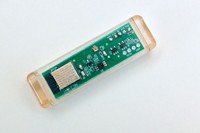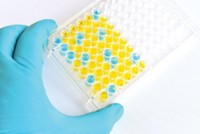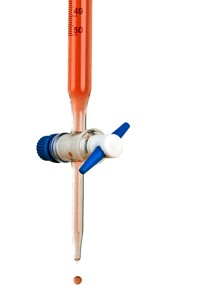Advertisement
Grab your lab coat. Let's get started
Welcome!
Welcome!
Create an account below to get 6 C&EN articles per month, receive newsletters and more - all free.
It seems this is your first time logging in online. Please enter the following information to continue.
As an ACS member you automatically get access to this site. All we need is few more details to create your reading experience.
Not you? Sign in with a different account.
Not you? Sign in with a different account.
ERROR 1
ERROR 1
ERROR 2
ERROR 2
ERROR 2
ERROR 2
ERROR 2
Password and Confirm password must match.
If you have an ACS member number, please enter it here so we can link this account to your membership. (optional)
ERROR 2
ACS values your privacy. By submitting your information, you are gaining access to C&EN and subscribing to our weekly newsletter. We use the information you provide to make your reading experience better, and we will never sell your data to third party members.
Diagnostics
Building a DIY plate reader
Undergraduates design a low-cost instrument for taking spectrophotometric measurements
by Alla Katsnelson, special to C&EN
January 11, 2019

A determined group of undergraduate students has designed a plate reader—an instrument for measuring the light absorption and fluorescence signals within microwell plates used ubiquitously for biological assays—that costs less than $3,500 to build and detects fluorescent dyes at concentrations as low as 10 nM (Biochemistry 2018, DOI: 10.1021/acs.biochem.8b00952). The open-source device, which is one-tenth the cost of commercially available plate readers, is a great option for low-resource laboratories or for educational settings, its developers say.
“If you think about enabling technologies for any biology or bioengineering lab, a plate reader is top of the list, after maybe a fluorescence microscope,” says Brian Y. Chow, a bioengineer at the University of Pennsylvania. Chow, the study’s corresponding author, was the students’ mentor on the project.
The work began as part of an annual synthetic biology contest for undergraduates called iGEM—the International Genetically Engineered Machine competition. Chow, who helped launch the contest when he was a graduate student at the Massachusetts Institute of Technology, notes that undergraduates are often daunted by the prospect of learning the molecular biology involved in cloning a genetic circuit designed to perform specific cellular tasks. So when advising his university’s 2017 team, he proposed that the students tackle a hardware project instead.
A plate reader consists of a spectrophotometer that detects light absorption or emission from biological, chemical, or physical reactions; a motion stage that moves individual wells into position for detection; and software that analyzes the data collected by the spectrophotometer. With guidance from Chow and a graduate student advisor, the undergraduate team worked through how to develop these key components.
Initially, the group tried to build custom detectors out of cameras and diffraction gratings, but eventually they found a commercial detector that could be purchased at the same cost.
Commercial plate readers generally rely on high-end motors to precisely position the plate in front of the detector, so one challenge was to obtain good motion control cheaply. The group’s solution was to create the frame of the plate reader out of t-slotted aluminum, a hardware component that not only is easy to assemble – “almost like Legos for building metal structures,” Chow says – but also acts as a built-in guide rail for the motion stage in which the plate rests. That allowed the team to use a simpler motor.
They programmed the software with Python, widely-used in science and engineering, to run on a small, basic computer called Raspberry Pi (though it works with any computer). Finally, they validated the device using representative biological and biochemical reactions. The DIY machine gave results comparable to a commercial plate reader and its detection limit is sufficient for many applications, including ELISA, Chow adds.
The team developed more than 100 pages of documentation for both the hardware and the software, “down to the level of how you solder or screw in every part,” Chow says. With these specs, researchers who want to build a plate reader but don’t have a machine shop can outsource the job without incurring much cost, Chow says.
Advertisement
“Making science more open source and DIY is a good thing,” Ingmar Riedel-Kruse, a bioengineer at Stanford University, says. In addition to much-reduced cost, a lab that builds its own plate reader can adapt the device to its specific needs — for example, by incorporating filters or adapting software for the experiments most relevant to the group’s research, he says. “And it’s something that undergraduates or early graduate students can do, which is a great learning experience.”
Now that the documentation has been released, Chow is keen to hear suggestions for improving it. “The main hope is that other people use it and get utility out of it, and that they give us feedback,” he says.





Join the conversation
Contact the reporter
Submit a Letter to the Editor for publication
Engage with us on Twitter